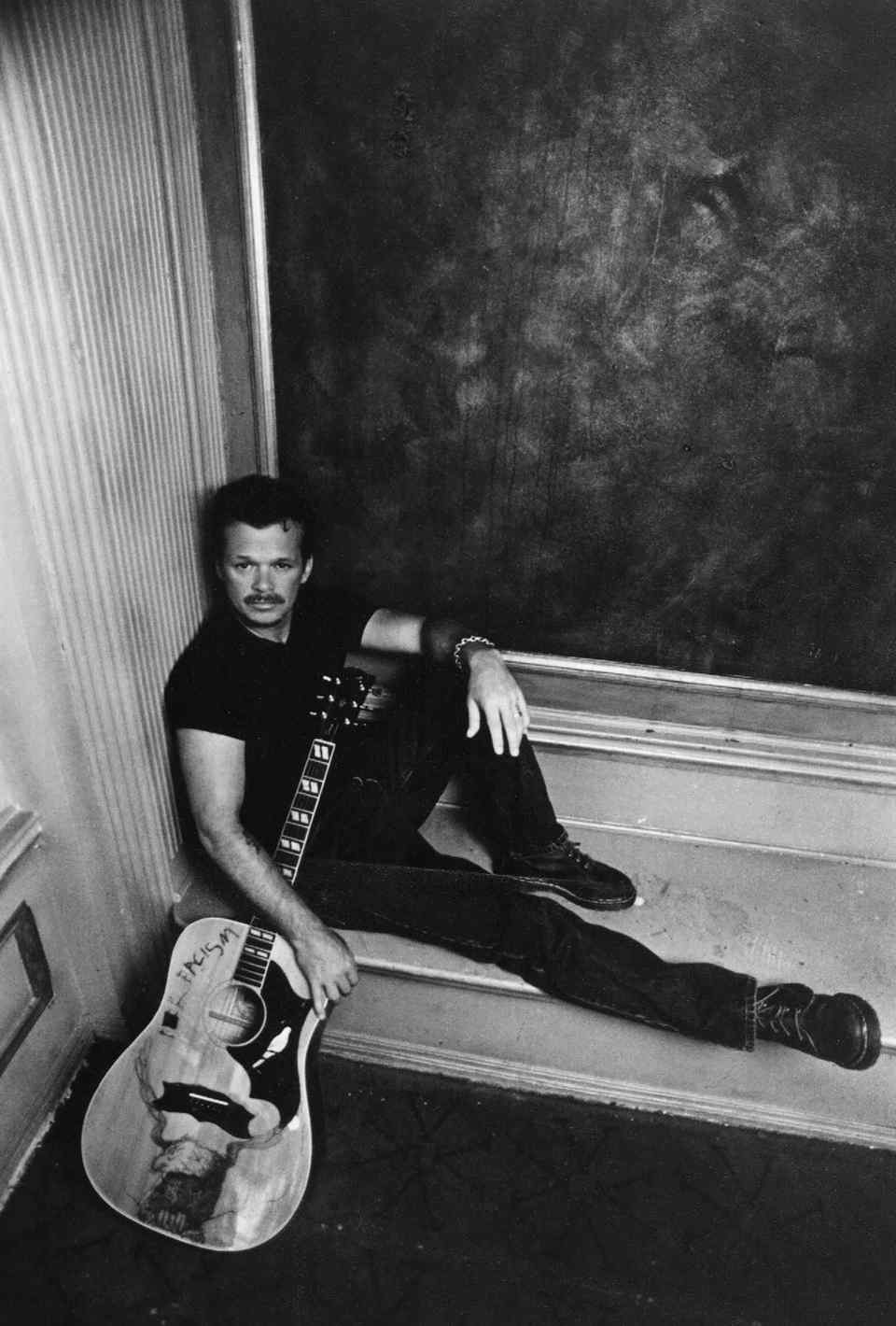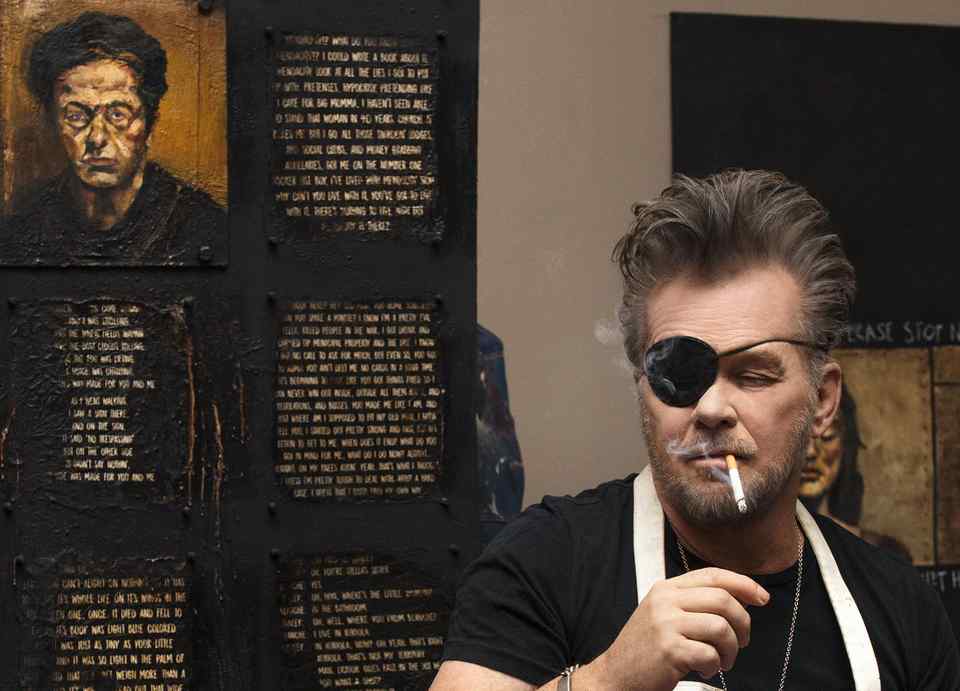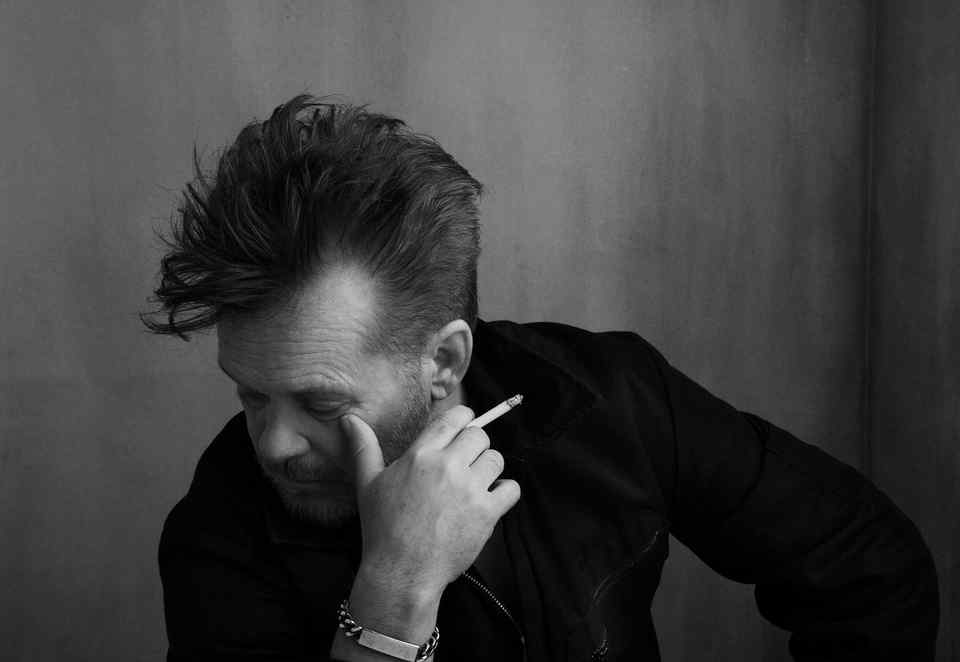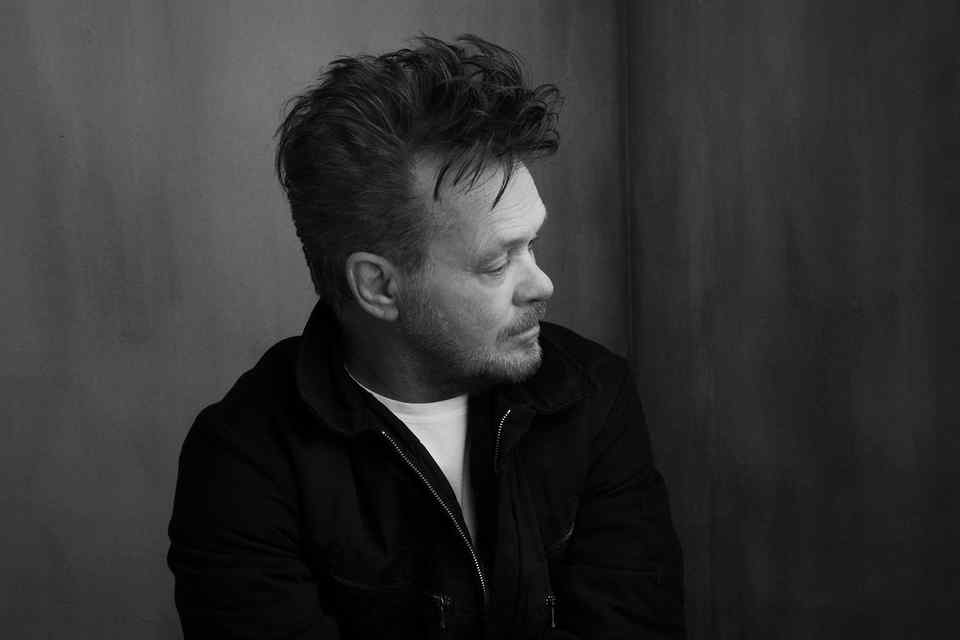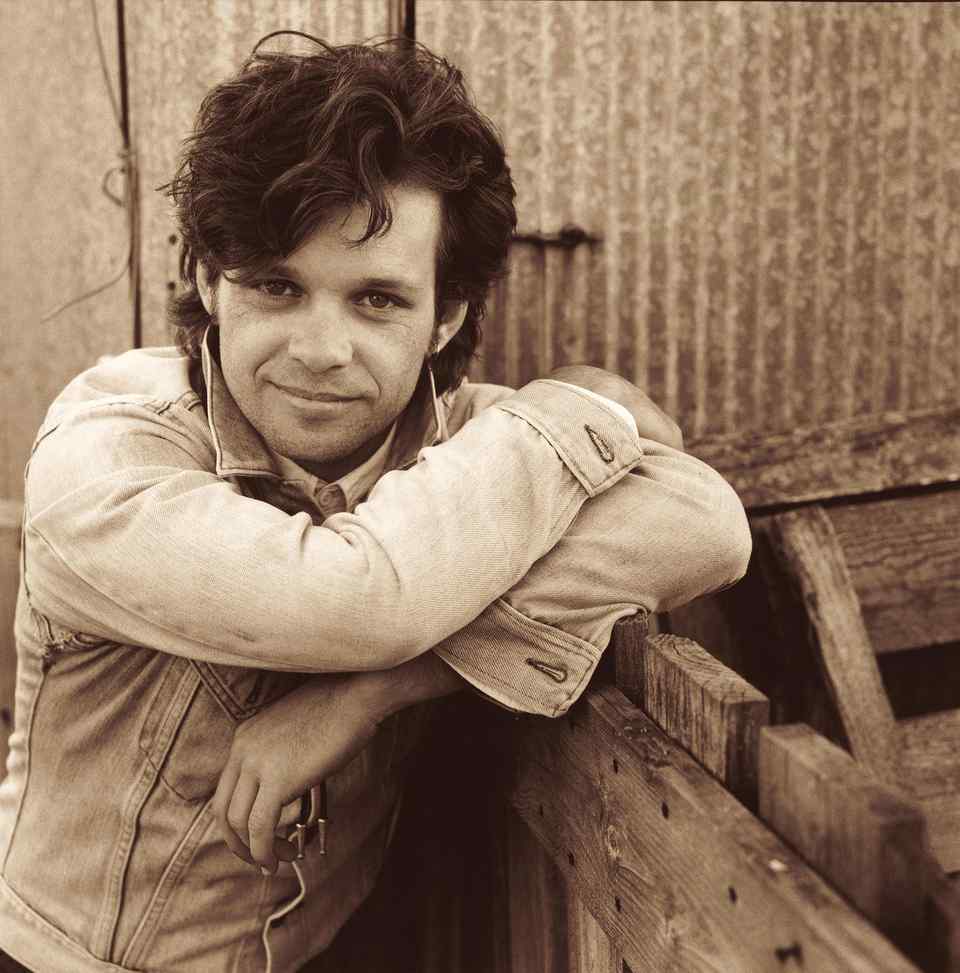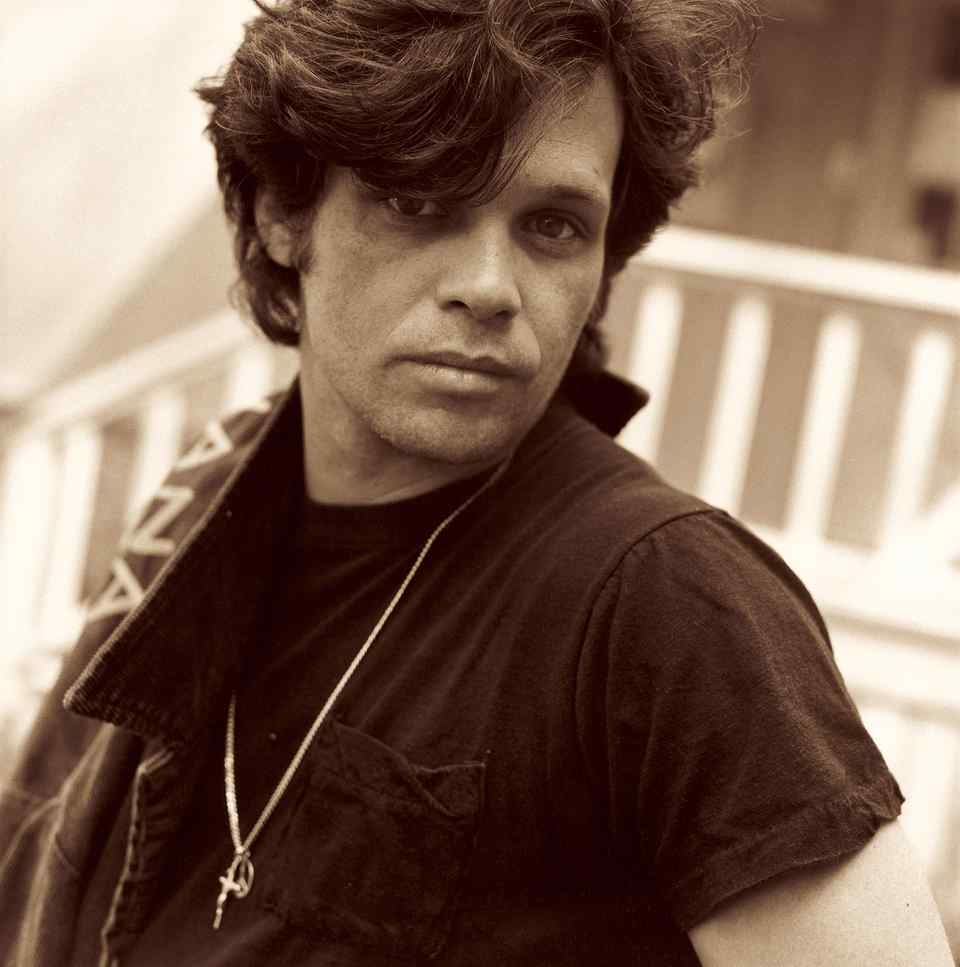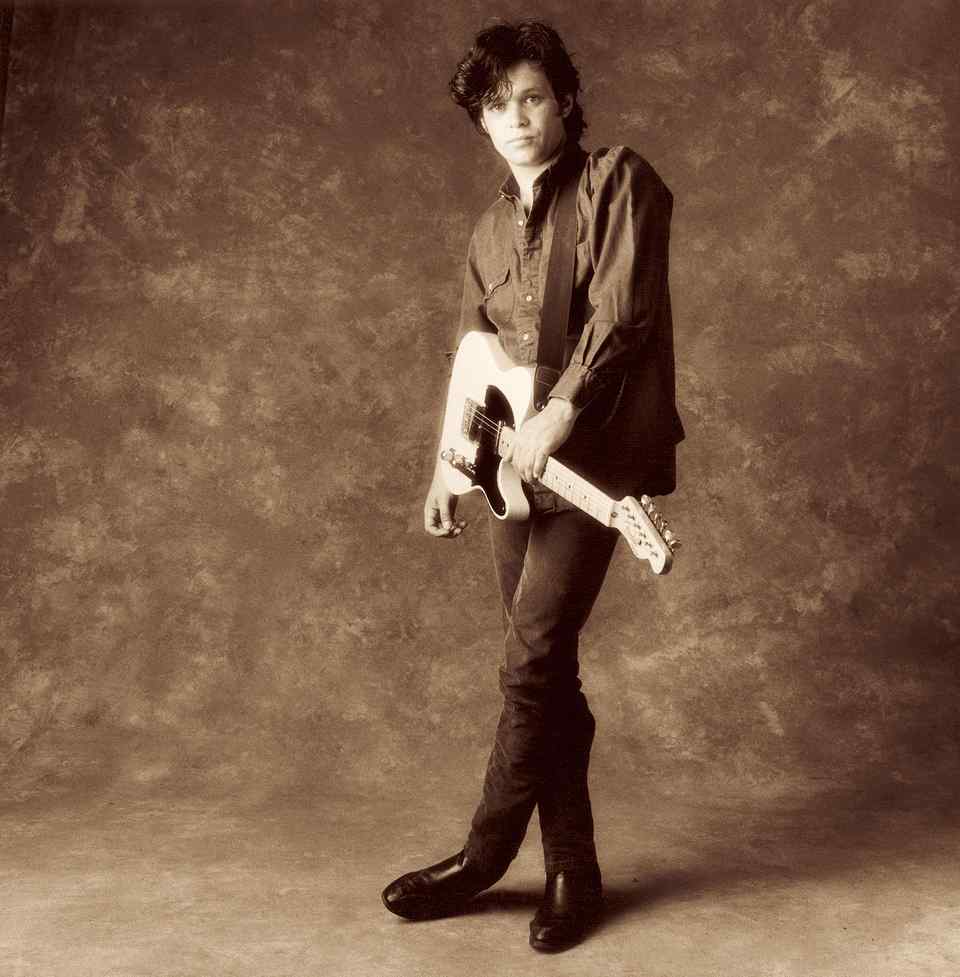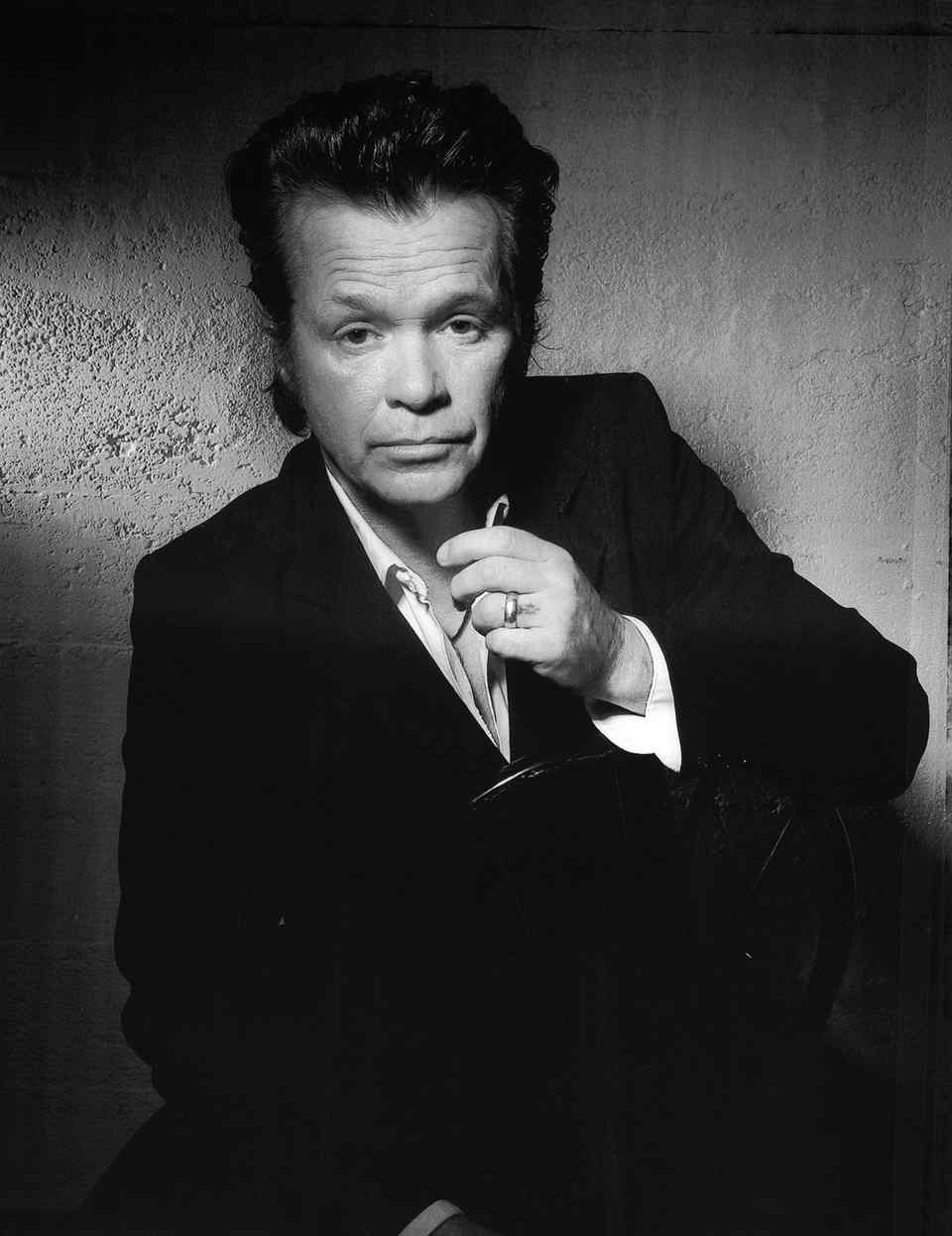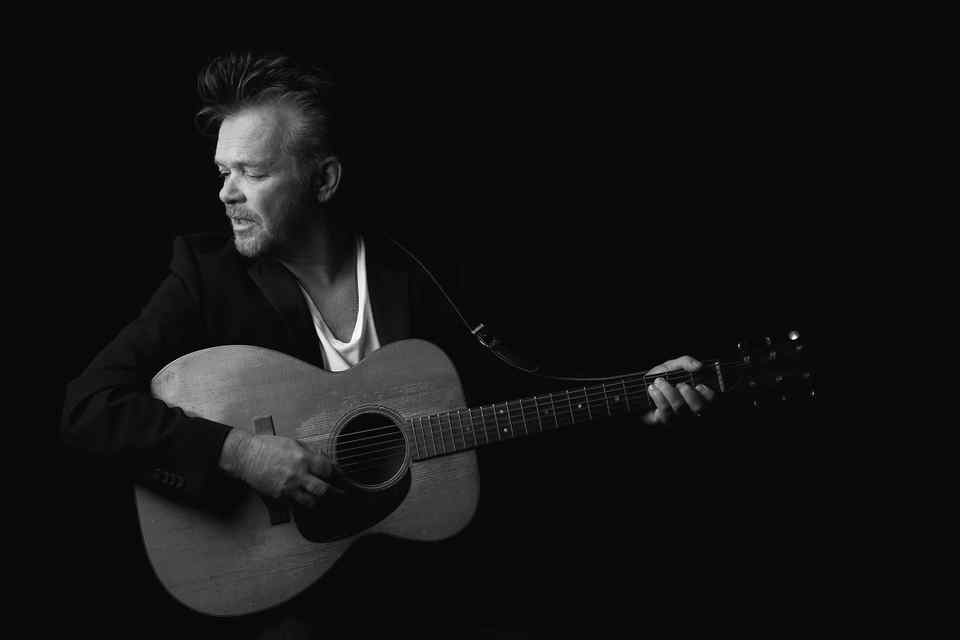Rolling Stone Magazine: John Mellencamp Chases Ghosts
From the new issue of Rolling Stone magazine hitting store shelves today (The Beatles on the cover). Article features a photo by Ian Markus from the Sun Studio sessions:
New disc recorded live in Sun Studio and other historic locations
By David Fricke
The music is as old and basic as the room: dirty-treble electric guitar; the fast, rubbery thwack of an upright bass; brisk strumming on an acoustic guitar. “Each day of sorrow/Just brings me closer to goodbye/And if I weren’t so afraid/I’d lay down and die,” John Mellencamp drawls into a 1950s-vintage microphone in one corner of Memphis’ Sun Studio.
“Each Day of Sorrow” is one of several new songs Mellencamp is recording for his next album at Sun over two nights in late July. As he leans toward the mike, Mellencamp lifts a boot heel, revealing an X on the floor made with two pieces of electrical tape, now black with wear and grime. It is the spot, marked by producer Sam Phillips half a century ago, where Elvis Presley stood at his mike when he made his five historic singles for Philips’ Sun label in 1954-’55. “It’s a mysterious room – it’s has ghosts,” says Mellencamp’s producer, T-Bone Burnett, pointing out two other X’s where Phillips placed Presley’s sidemen, bassist Bill Black and guitarist Scotty Moore. “Sam walked around that room,” Burnett says with awe, “and found where every instrument sounded best.”
Tonight, David Roe, a bassist from Nashville, and New York guitarist Marc Ribot are in those zones. Andy York, a member of Mellencamp’s band stands to the singer’s right, playing rhythm guitar. It is a tight fit; the studio, still at its original address (706 Union Avenue), is about the size of a suburban kitchen. And Mellencamp is cutting everything live, in mono, the same way Phillips made fundamental rock & roll hits with his Sun gods – Presley, Carl Perkins, Johnny Cash and Jerry Lee Lewis – in the mid-Fifties. By 1 a.m., Mellencamp and Burnett have four songs in the bag, including the gritty country stroll “No One Cares About Me,’ the dark ballad “West End” and “Easter Evening,” a long bar-fight tale in waltz time that sounds like one of Bob Dylan’s talking blues.
“Henry and I were laughing,” Mellencamp says during a fried-chicken break, using Burnett’s real middle name. “We got five songs here last night. We asked ourselves, ‘What the fuck were we doing in the Seventies and Eighties, spending days and days on a drum sound, when it was all right here the whole time?’”
This album won’t come out until 2010, but Mellencamp – who is recording on off days from his summer tour with Dylan and Willie Nelson – already has a title, taken from one of the new songs: No Better Than This.
That also goes for the two days Mellencamp and Burnett spent in early July recording in the First African Baptist Church in Savannah, Georgia. Those sessions featured just Mellencamp and York flanking a single microphone, surrounded by noble and terrible history. Founded in 1773, the church was the first started by blacks in America and was a major stop for runaway slaves on the Underground Railroad. Across the street, Mellencamp notes, “was the flogging square where they publicly beat the slaves.”
“Both the church and this place,” Burnett says, referring to Sun, “are centers of the civil rights movement. What Sam Phillips was doing in that room in the 1950s was just as important,” Mellencamp concurs. Recording in the midst of those ghosts, sacred and profane, he says, “just made sense to me.”
The two were already deep into another album in progress – Ghost Brothers of Darkland County, a “radio play” (Burnett’s term) written by the singer with author Stephen King and featuring guest vocalists such as Elvis Costello and Neko Case – when Mellencamp realized he had a batch of songs that, he says, “didn’t fit. When I found out I was going out with Bob, I thought, ‘Let’s see where we can record that would be interesting and fun.’”
One location that didn’t work out was the now-derelict Brunswick Records Building in Dallas, where bluesman Robert Johnson cut his final sessions, in 1937. (The current owner refused permissions.) And there have been technical issues. Engineer Paul Mahern is recording the sessions on a 1955 mono Ampex tape machine that he purchased on eBay for $350. But Sun’s tiny control room is now outfitted with modern gear, including a 24-track console, so Mahern ran cables outside to a makeshift control room in a metal construction trailer (with no air conditioning).
But Mellencamp is charged by the results. Out in the trailer, listening to a playback of “No One Cares About Me,” Mellencamp shouts, “That’s fantastic!” and slaps his leg in delight after Ribot’s slashing metallic-rockabilly solo. Later, in the studio, after a hot spin through “Each Day of Sorrow,” Mellencamp turns to Burnett and declares, “I think that one’s the almighty.” Burnett smiles in agreement.
Mellencamp shrugs when asked about the potential audience for such a raw, simple record. “I am done being a rock star,” he says flatly. “I have no interest in that, in having the biggest concerts. I have only one interest: to have fun while we’re doing this and maybe have something that somebody might discover.” Then he quotes a piece of advice folk singer Pete Seeger once gave him: “I first met him when I was a kid. He told me, ‘Keep it small.’”
New disc recorded live in Sun Studio and other historic locations
By David Fricke
The music is as old and basic as the room: dirty-treble electric guitar; the fast, rubbery thwack of an upright bass; brisk strumming on an acoustic guitar. “Each day of sorrow/Just brings me closer to goodbye/And if I weren’t so afraid/I’d lay down and die,” John Mellencamp drawls into a 1950s-vintage microphone in one corner of Memphis’ Sun Studio.
“Each Day of Sorrow” is one of several new songs Mellencamp is recording for his next album at Sun over two nights in late July. As he leans toward the mike, Mellencamp lifts a boot heel, revealing an X on the floor made with two pieces of electrical tape, now black with wear and grime. It is the spot, marked by producer Sam Phillips half a century ago, where Elvis Presley stood at his mike when he made his five historic singles for Philips’ Sun label in 1954-’55. “It’s a mysterious room – it’s has ghosts,” says Mellencamp’s producer, T-Bone Burnett, pointing out two other X’s where Phillips placed Presley’s sidemen, bassist Bill Black and guitarist Scotty Moore. “Sam walked around that room,” Burnett says with awe, “and found where every instrument sounded best.”
Tonight, David Roe, a bassist from Nashville, and New York guitarist Marc Ribot are in those zones. Andy York, a member of Mellencamp’s band stands to the singer’s right, playing rhythm guitar. It is a tight fit; the studio, still at its original address (706 Union Avenue), is about the size of a suburban kitchen. And Mellencamp is cutting everything live, in mono, the same way Phillips made fundamental rock & roll hits with his Sun gods – Presley, Carl Perkins, Johnny Cash and Jerry Lee Lewis – in the mid-Fifties. By 1 a.m., Mellencamp and Burnett have four songs in the bag, including the gritty country stroll “No One Cares About Me,’ the dark ballad “West End” and “Easter Evening,” a long bar-fight tale in waltz time that sounds like one of Bob Dylan’s talking blues.
“Henry and I were laughing,” Mellencamp says during a fried-chicken break, using Burnett’s real middle name. “We got five songs here last night. We asked ourselves, ‘What the fuck were we doing in the Seventies and Eighties, spending days and days on a drum sound, when it was all right here the whole time?’”
This album won’t come out until 2010, but Mellencamp – who is recording on off days from his summer tour with Dylan and Willie Nelson – already has a title, taken from one of the new songs: No Better Than This.
That also goes for the two days Mellencamp and Burnett spent in early July recording in the First African Baptist Church in Savannah, Georgia. Those sessions featured just Mellencamp and York flanking a single microphone, surrounded by noble and terrible history. Founded in 1773, the church was the first started by blacks in America and was a major stop for runaway slaves on the Underground Railroad. Across the street, Mellencamp notes, “was the flogging square where they publicly beat the slaves.”
“Both the church and this place,” Burnett says, referring to Sun, “are centers of the civil rights movement. What Sam Phillips was doing in that room in the 1950s was just as important,” Mellencamp concurs. Recording in the midst of those ghosts, sacred and profane, he says, “just made sense to me.”
The two were already deep into another album in progress – Ghost Brothers of Darkland County, a “radio play” (Burnett’s term) written by the singer with author Stephen King and featuring guest vocalists such as Elvis Costello and Neko Case – when Mellencamp realized he had a batch of songs that, he says, “didn’t fit. When I found out I was going out with Bob, I thought, ‘Let’s see where we can record that would be interesting and fun.’”
One location that didn’t work out was the now-derelict Brunswick Records Building in Dallas, where bluesman Robert Johnson cut his final sessions, in 1937. (The current owner refused permissions.) And there have been technical issues. Engineer Paul Mahern is recording the sessions on a 1955 mono Ampex tape machine that he purchased on eBay for $350. But Sun’s tiny control room is now outfitted with modern gear, including a 24-track console, so Mahern ran cables outside to a makeshift control room in a metal construction trailer (with no air conditioning).
But Mellencamp is charged by the results. Out in the trailer, listening to a playback of “No One Cares About Me,” Mellencamp shouts, “That’s fantastic!” and slaps his leg in delight after Ribot’s slashing metallic-rockabilly solo. Later, in the studio, after a hot spin through “Each Day of Sorrow,” Mellencamp turns to Burnett and declares, “I think that one’s the almighty.” Burnett smiles in agreement.
Mellencamp shrugs when asked about the potential audience for such a raw, simple record. “I am done being a rock star,” he says flatly. “I have no interest in that, in having the biggest concerts. I have only one interest: to have fun while we’re doing this and maybe have something that somebody might discover.” Then he quotes a piece of advice folk singer Pete Seeger once gave him: “I first met him when I was a kid. He told me, ‘Keep it small.’”
